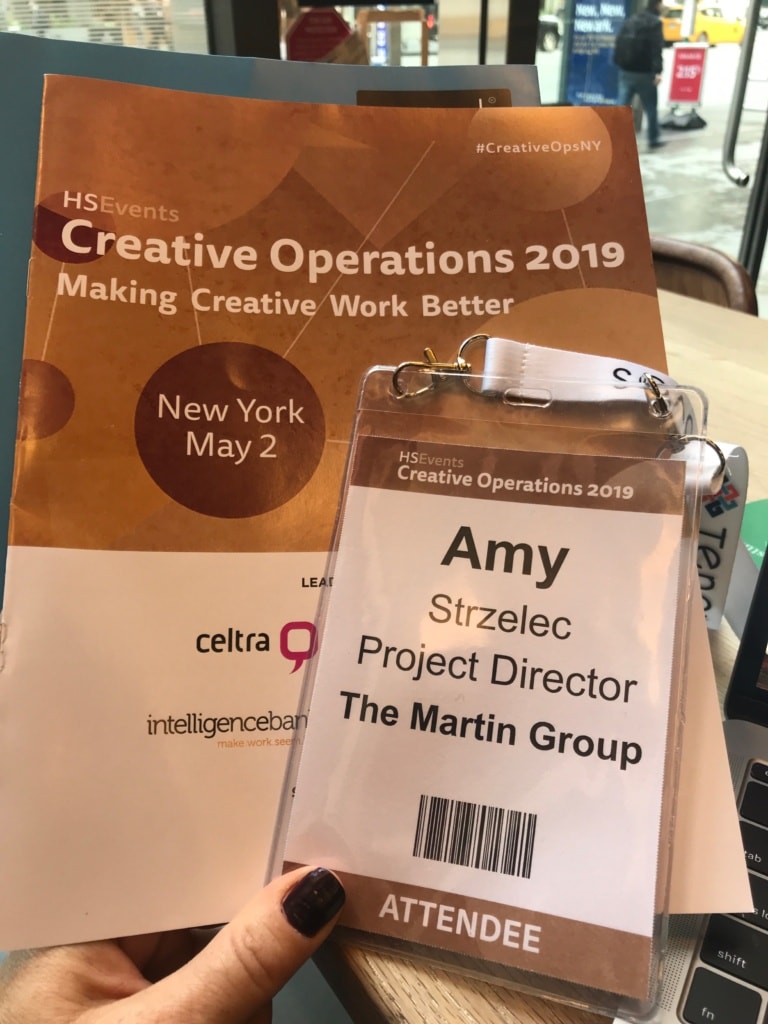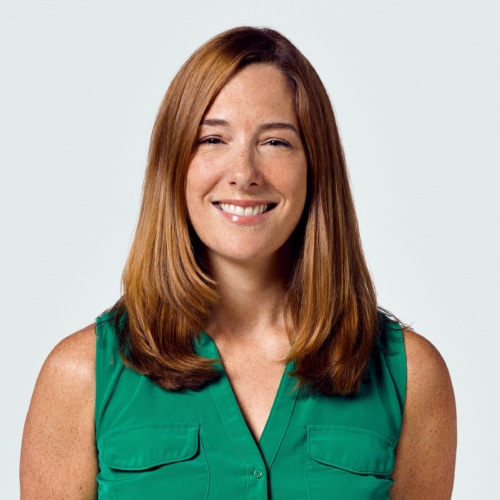Six takeaways from #CreativeOpsNY

Earlier this month, Amy Strzelec, Project Director at The Martin Group, attended the Creative Operations New York conference held in Midtown Manhattan. The conference, as evidenced by its name, centered around the field of creative operations and featured speakers from brands like Google, Nickelodeon, and The Hershey Company.
But before we dive into what Amy brought back from the big city, we should start by understanding what exactly our creative operations department does.
What is creative operations?
Creative operations is an internal department focused on bringing efficiency to the creative workflow process. Essentially, creative operations managers work to remove impediments, manage resources, and optimize the process of providing our clients with the high-quality creative work expected from The Martin Group.
Frankly, the establishment of a creative operations department is music to the ears of the writers and designers littering the halls of 620 Main Street. Creatives need space to produce great work and to surround them with the chaos generally associated with managing multiple projects, setting priorities, and processing feedback is not conducive to creative thinking.
#CreativeOpsNY
With an agenda filled with interactive workshops and sessions like Fueling Creative Efficiency and What Does the Ideal Creative Ops Team Look Like?, the event highlighted the importance of creative operations across both in-house teams and agencies.
Standout speakers included opening remarks by Kevin Brucato, VP, creative operations at Prudential – who inspired Amy’s first two key takeaways – and Josh Affruet, head of production for YouTube/Google who spoke on How Today’s Technologies are Shaping the Video Production Workflows of Tomorrow.
But the value in attending conferences doesn’t just come from the logos on the business cards you collect – it comes from the ideas you bring back. So, let’s dive into the top six takeaways from this year’s Creative Operations New York conference:
Demand management is crucial.
Everyone understands the immediacy and volume that today’s media consumption dictates. We are all struggling with managing the need to produce more content with less time and at the same quality. To achieve these lofty goals, creative operations focuses on minimizing distractions, roadblocks, and inefficiencies that restrict the creative team.
Balance the trifecta of technology, culture, and environment.
The most significant challenges for agencies are:
- Evaluating and implementing any project management software
- Managing a multi-generational workforce – both analog and digital
- Staff working remotely or in an open-office environment across multiple locations
It’s essential for any creative operations manager to optimize workflow while still preserving company culture and allowing creative decisions to remain within the creative department.
Technology shouldn’t replace human interaction.
In-person collaboration, team communication, kick-off meetings, and video conferencing are essential to successful teams. In some cases, and especially with younger teams, communication and workflow can live too much in the digital space – creating too many opportunities for confusion, dissention, and animosity. Collaboration can be challenging, and everyone communicates differently, so it’s crucial to allow for individuals to work within whatever space they’re most comfortable.
Allow our creative team to be more creative.
By minimizing mundane administrative tasks through automation and streamlining internal processes, you’re allowing your creative team to provide the most value to your organization. Supplying your creative team time for creative thinking and execution not only produces higher quality work, it improves culture and employee retention.
Video is the next frontier.
The days of creating one TV spot and sprinkling it everywhere are over. The new model puts the platform first and focuses on creating content for that specific audience. By re-thinking the traditional production workflow, we can optimize our content through targeting, measurement, and optimization. However scary it is to a creative team, data can and should influence creative decisions.
You’re never there.
The overall theme of Creative Operations New York was “you’re never there.” You will never be finished optimizing your processes and workflow, and you should always look at what is and isn’t working and look for ways to improve.

